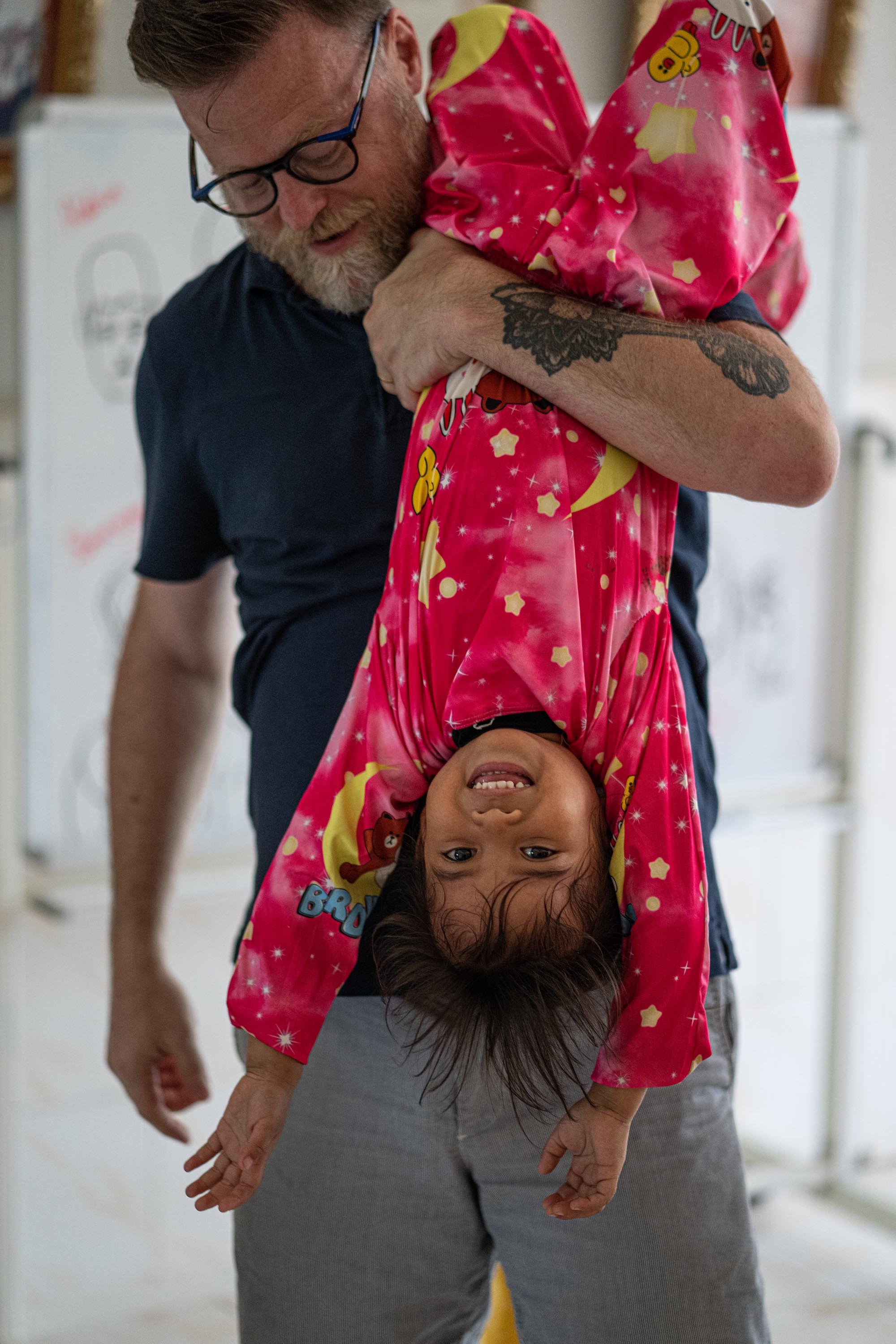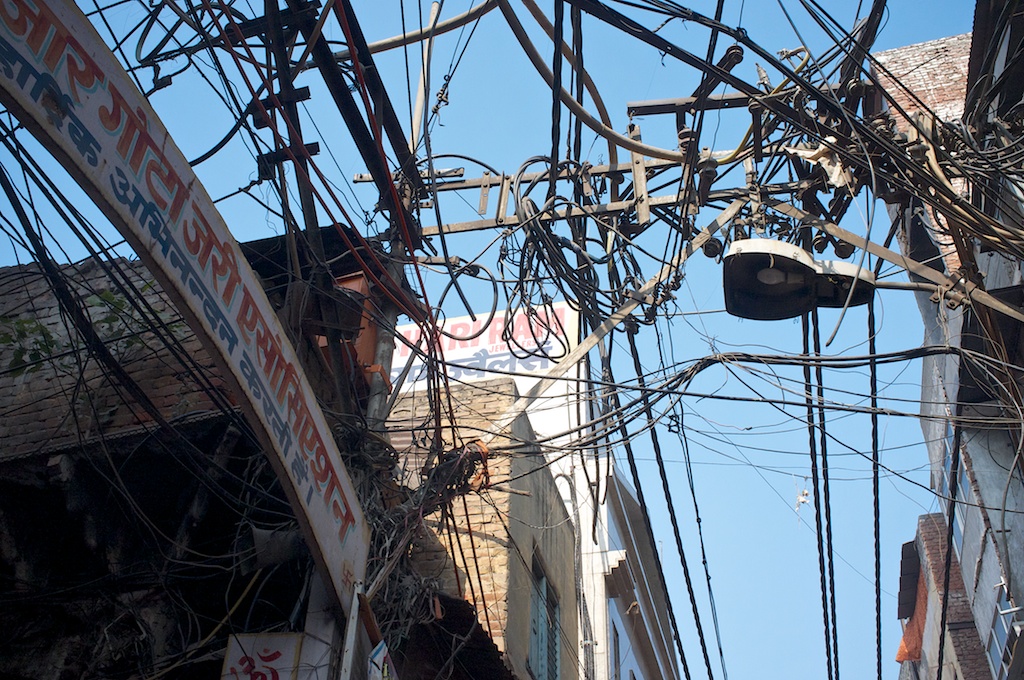Sam and I have had a great time
this last week, enjoying lots of opportunities to act like tourists, especially
over the last couple of days.
On Sunday morning we took the train from Delhi to Agra, home of the magnificent Taj Mahal. Like so many aspects of Indian society, the railways here are a thrilling but exhausting spectacle that manages somehow to be both frenetic and plodding at the same time.
[note: due to a digital mishap of epic proportions, all of my photos from Old Delhi and Agra are gone. The only place they exist is in a Facebook album. Sad face.]
We sprung for the first class tickets. The bump in price provided reasonably clean assigned seats and an absence of livestock. We left at dawn, rode in relative comfort through near white-out fog conditions, and arrived at the Agra station largely unmolested. Exiting the train, however, ejected us into a den of hustlers, pickpockets and touts that latch onto foreigners like fleas on a dog’s rump. Despite their best efforts, we successfully hired a taxi and rumbled our way to a somewhat embarrassingly posh hotel with cricket grounds and a rooftop view of the Taj.
I’m not a jaded traveler. I walk around this part of the world with a sense of awe pretty much 23/7. This said, I was prepared to be only mildly impressed by the Taj Mahal. My first glance, however, left me quite literally breathless.
First, I never had any idea that it was so big. I imagined something a couple of stories tall. The thing is enormous. Like 300+ feet high. Not only that, it’s just absolutely gorgeous. Pictures truly don’t convey the beauty – the amazing symmetry, the scale, the exquisite finishes, the way the marble changes color as the sun moves across the sky. From every angle, it’s a masterpiece, and it is by far the most beautiful building I’ve ever seen. The Mughal architects and craftsmen rivaled the creators of Angkor Wat. Like the ancient Khmer artisans, the creators of the Taj Mahal seem to have been blessed with almost a supernatural level of creativity and skill. Truly, the Taj is so much more than just another world traveler’s box to check before moving on to the Parthenon and the Eiffel Tower.
We returned to Delhi the next day and checked into a modest hotel near the airport and began planning our rendezvous with the rest of our team. Tim, Carol, Greg and Keith arrived together that evening and began their own initiation into travel purgatory. To make a very long story shortish, the hotel had informed us that they would not send a car until they received a call from the team informing them that they were on the ground. Unfortunately, there were no pay phones inside the hotel, so the team had to leave the airport and walk past the area the driver would later come to wait for them.
Complicating matters further, Carol had heard the guy from the hotel instruct her to look for a man with a black car with the hotel’s name. Nope. He said to look for a “man with a placard with the hotel’s name.” An hour or so after their expected arrival time, I asked the front desk captain if they had been picked up. “No. We talked to Mrs. Richardson on the phone, but we cannot find her team.”
Great. So I grabbed my coat and hailed a cab to the airport where I began my search, calling the hotel every half hour or so to see if they had arrived. My search began somewhat leisurely – I fully expected to find them within minutes of arrival. By the time midnight rolled around I was becoming frantic. No one could help me, no one would call the United Airlines office for me to try to locate them, and I wasn’t allowed in the airport without ticket or passport, the latter I had left at the hotel.
Thank God for my Indian cell card. I received a call around 12:30 that they had given up and taken a cab to the hotel. They were all in good spirits when I arrived – I was certainly more stressed out than any of them.
The next day – yesterday – we all got up and headed to the airport to make our flight to Siliguri and produced another travel comedy that I won’t take the time to discuss. Suffice it to say that it was only funny in retrospect. It was like an episode of the Amazing Race without the bimbos and backstabbing.
Eventually we all made it to Siliguri and were greeted by our wonderful director Nandu and his lovely wife Anu. We enjoyed a delicious lunch at a local hotel and headed in three cars – red, white and blue – into the mountains on a beautiful, but perilous journey that was something like a day trip though the Smoky Mountains and the fliming of a sequel to Blade Runner.
We arrived after dark at the Silver Oaks Hotel in Kalimpong, just the kind of quaint, Raj-era lodge you’d hope to find nestled in the foothills of the Himalayas. It’s really much nicer than we need, but Nandu negotiated an almost 50% tariff reduction, and he assured us that the other hotels would not be warm enough. A good night’s sleep in a comfortable bed with a thick blanket augmented marginally by a tiny space heater has convinced me that he made a good decision.
In a few minutes we will meet Nandu for breakfast and then we’ll make the final turn in our transition from tourists to visiting family, walking about a kilometer down the road to see the kids. I’ve loved all of the beautiful and impressive cultural sights, but none of them – not even the Taj – will be any better than the sight of the 50 smiling kids from our Kalimpong 1 and 2 homes, many of whom I have never met.
I will be sure to take lots and lots of pictures. Now the trip is really going to get good. Please stay tuned over the next few days for photos and stories from the most exciting part of our journey here in India. Thank you so much for your support of the kids and staff of Asia’s Hope.







































































































































